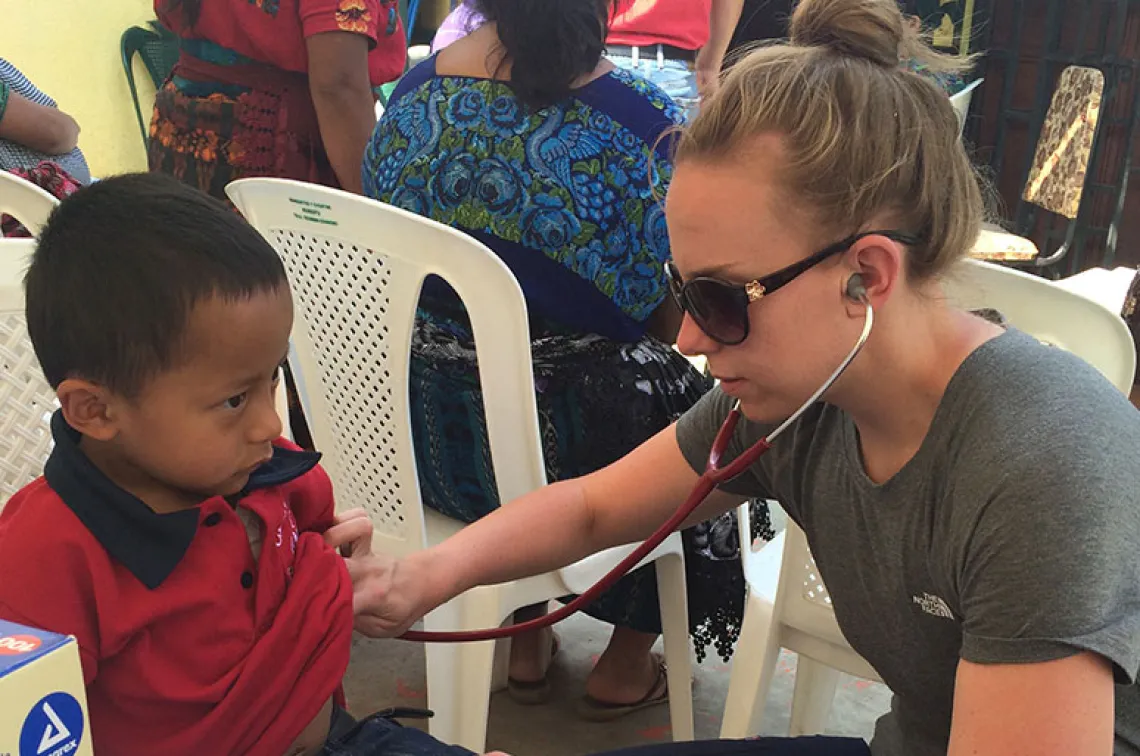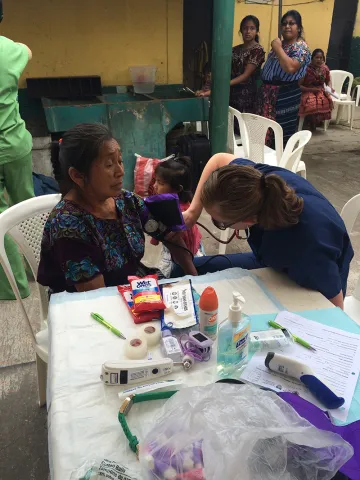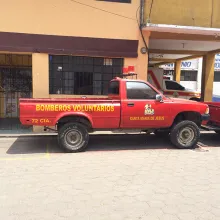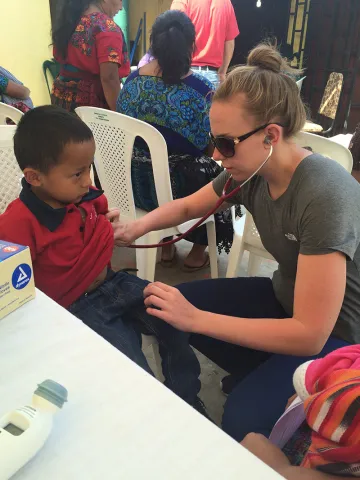A Scare in Guatemala: Amanda's Story

It’s what 12:42 Kevin Storey, RN, senior manager at unit Diamond Two West within Banner University Medical Center Tucson, asks as he checks his watch. At 12:43, the people we take care of, their lives are turned upside down.

Amanda Zeagler had no idea her life would be upended when she embarked on a medical mission trip to a remote region of Guatemala. A nursing student at Northern Arizona University, Amanda traveled to Guatemala with the organization Nursing Heart Inc. to provide care to the underserved and further explore her passion for nursing.
On the final day after wrapping up clinic, Amanda and her fellow travelers were scheduled to experience the local culture by attending a shaman’s ceremony. The group entered a small hut, where a variety of items were being burned. Poorly ventilated, the hut quickly filled with smoke. Amanda began having difficulty breathing when she was swathed in smoke from a burning branch. She left the hut to catch her breath but lost consciousness on the way out.
An hour and a half from the nearest hospital, Amanda was rushed to a local clinic in Santa Maria de Jesus, a small, sparsely populated village in Guatemala’s central region. While Amanda was administered breathing treatment and even began to breathe more easily at one point, her airway collapsed in transport.
Amanda was transferred from the clinic in Solola to the nearest hospital, Hospital Herrera Llerandi in Guatemala City. Used to a fast-paced, collaborative approach, her fellow travelers were struck by the disparities between the Guatemalan hospital and the care they administered back home in the United States.
News of Amanda’s emergency situation made it back to Tucson, Arizona, and into the ears of Sandra Patricia 'Patty' Barcelo, senior program coordinator of the University of Arizona’s Department of Surgery. A native of Guatemala herself, Patty knew just how limited available medical resources were in her home country and caught the next flight out to assist in Amanda’s care. Amanda’s mother, Charlotte Smith, assistant administrator for the Department of Surgery, followed shortly after.

Patty and Charlotte were back and forth on the phone with the Department of Surgery doctors back home in Tucson to provide counsel in Amanda’s care. However, her heart rate started declining and her condition began to worsen after a failed extubation attempt and re-intubation for severe strider and respiratory failure. She needed to have her defibrillator checked, but the device was too new and the Guatemalan hospital didn’t have the compatible equipment. She was then given approval by her insurance company to return to the United States.
Amanda was flown to Banner University Medical Center Tucson, the partner hospital of the University of Arizona Department of Surgery. There she was greeted by Department of Surgery trauma fellow Dr. Matthew Singer and Trauma Division faculty member Dr. Andrew Tang. Immediately upon Amanda’s arrival, Dr. Singer took Charlotte aside into a quiet conference room and listened attentively to the entire story of what happened in Guatemala.
For him to be able to sit and listen to the story as long as he diD’he listened to every detailWas truly amazing, said Charlotte. Because there have been times when we‘ve told stories to doctors and gotten the idea that they‘re not really listening or trying to get you to move on a little faster because what you‘re saying may not be important to them.
Doctors first conducted a physical evaluation on Amanda and noticed that her heart rate was extremely low, dropping as far as into the 30s. The physicians, residents, nurses, and med students collaborated to identify and carry out a patient-centered care plan, which included removing a Peripherally Inserted Central Line (PICC) placed in Guatemala, as imaging revealed there was blood clots in the line. They also eliminated the QT-prolonging medications Amanda was receiving. The efforts of the team were soon realized as Amanda’s heart rate started to improve. She was able to be extubated the next day and was on her way to a speedy recovery.

Throughout Amanda’s emergency, the team at Banner took a team-oriented, collaborative approach to her care. In an academic environment where learning is emphasized, doctors, nurses, Banner staff, and family were empowered to work together to improve the quality of Amanda’s care and reach the best possible outcome.
’there is no hierarchy, said Storey, one of the nurses who cared for Amanda. We‘re all equal members of the team, which is a phenomenal way to take care of patients. In those multidisciplinary care rounds we have, everyone contributes. It’s family-centered care. It’s patient-centered care.
Beyond a wonderful outcome health-wise, the experience of receiving care at Banner inspired Amanda with new purpose. Prior to going to Guatemala, she had been struggling with her career path and deciding which nursing specialty to choose. After receiving the collaborative, people-centered care she got at Banner, Amanda discovered a passion for critical care nursing. She is now employed as an ICU nurse at Banner.
At Banner University Medical Center, I was somebody’s somebody. The nurses in the ICU took the time to get to know me. They knew I was a student nurse. I wasn’t just a patient with an ID band who needed medication, Amanda said. It doesn’t matter who you are. They‘re going to treat you the same, and they‘re going to provide that outstanding, compassionate care.

